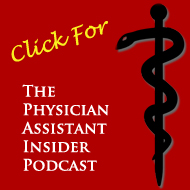I’ve written previously about my Clinica Tepati, one of UC Davis School of Medicine’s seven student run-clinics. This weekend, I had my second chance to volunteer my time at a different student-run clinic, and it was a blast!
What is a student-run clinic?
- A fully operational (usually part time, e.g. Sat/Sun) clinic where patients are seen by students in MD and PA programs.
- The students volunteer in order to have fun, gain medical experience, and learn about different populations within the field of medicine.
- Patients are provided comprehensive care targeted to their cultural population (e.g. Latino, Asian, African American, etc.) or type of presenting problem (homeless, sex worker, intravenous drug user, etc.)
- Physicians and PAs also volunteer at these clinics to supervise and train the students, and help provide needed care to the public.
- Most services are offered for free, or a very low cost.
Joan Viteri Memorial Clinic (click for link)
JVMC is a student-run clinic that focuses primarily on patients who use intravenous drugs, and/or work in the sex industry. It is situated in an economically disadvantaged part of town (I have heard people describe the neighborhood as “colorful,” or “sketchy.” A helpful visual: bars over the windows of businesses and homes are a common sight.)
Though I can’t share patient stories (confidentiality is an important patient right), I can say that if you spend the day at JVMC, some tasks you are likely to perform include:
- Pelvic exams, pap smears, and STD testing.
- Vaccinations and testing for infectious diseases (e.g. hepatitis A/B/C, HIV, gonorrhea, chlamydia, HPV (herpes virus), etc. You also might be sharing the results of completed tests with patients.
- Incision & Drainage (I&D) of abscesses - I would attach a video here, but they can be graphic, so if that interests you, just do a search for “I&D” or “abscess” on YouTube. Abscesses are more common at JVMC because patients who use IV drugs are at risk for injection site infections which can them.
- Evaluating and treating patients with Suboxone,(a opiate agonist/antagonist that treats withdrawal and also blocks the effects of opioids like heroine and codeine) and methadone.
- Referrals for AA, NA, and other drug treatment programs.
- Other primary care treatments (for hypertension, heart disease, asthma, etc.)
I had great time at the clinic. The patients were all kind and grateful for the care provided. The undergrads volunteers greet patients, keep the clinic running efficiently, and help the students and docs stay organized. If you’re looking for Pre-Med or Pre-PA health care experience, you would do well to look for clinics like JVMC at the universities and medical centers in your area. The doctors were both great, and volunteer because 1) they believe in the mission of the clinic, and 2) they love to teach students.
A Typical (hypothetical ) Patient Interaction:
- An undergrad will give you a patient chart and tell you why they are here. If you are comfortable seeing them (your choice) you look the record over, then invite the patient in from the wait room.
- Interview the patient, collecting as much information as you feel you need.
- Excuse yourself and “present” the case to the physician preceptor. Presenting a case is basically giving an organized verbal rundown of who the patient is, why he/she is there, and what you learned in your interview. If you have thoughts about what tests to order or treatment to provide, you share these too. You may have seen patient presentations on shows like ER or Gray’s Anatomy (“Mr. Johnson is a 58-year unemployed man who is having pain and tenderness in his left axillary area after injecting heroine there two days ago. He is alert and oriented, with a 2 inch circular abscess that is indurated, erythematous, and hot. He takes no regular meds, is allergic to penicillin, vital signs are….” You get the idea. They are usually less formal on in real life than on TV, but not always.
- The preceptor may ask you questions. For example: “Okay, given the location of the abscess, what are our biggest concerns? You do your best with these questions, and after you’ve taken a shot at them, you learn from what you missed.
- The physician preceptor gives you feedback and helps you prioritize what you will do.
- You return to the patient, ask more questions if you need to, order tests, and or provide the treatment that you and the preceptor discussed. Medical students (PA and MD) provide most of the care. If there’s something tricky, the doc may need to do it, and you will observe or help. For example, I did a pelvic exam, and after the doc watched my speculum exam, I did the “bimanual” exam (inserting two gloved fingers into the vagina to feel the patient’s adnexa, ovaries, and uterus). The doc then repeated the bimanual exam herself to make sure that I hadn’t missed anything.
- After the patient leaves, you write up the chart note (SOAP note), have the doc look it over, add to it if necessary, and sign it off.
- The patient note will count toward my MCRs (minimum clinical requirements) - the log of all the different kind of patient encounters that I need to have before I graduate.
Working with patients of different ethnic, religious, and social backgrounds is the best way to prepare yourself to be in medicine. You see people in genuine need, learn about different walks of life, and broaden your horizons - to me, that’s what life is all about. -P

